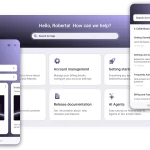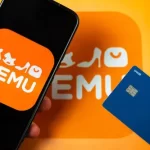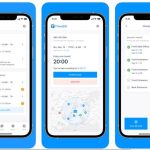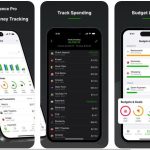Successful Mobile App Marketing Strategies
The type of app marketing strategy you use will determine the success the mobile app. Having a mobile app is one thing and deriving success from it is another. This is more reason for you to also focus on the way you plan to market the app. I mean, the only way you will see the fruits of your labor after having spent 4 or 6 months developing it is seeing impressive numbers from marketing it. Currently, there are more than 1.4 million apps in Google play store and over 1.4 million apps on App store as well. To have an edge over the other apps you need to come up with an effective marketing strategy.
Many people confuse advertising and marketing. Truth is that marketing should be the heart and soul of the app. You need to focus on it even before you start developing your app. “Who is your target market? What are you aiming at? Who are your competitors?” These are some of the questions that you should pay attention to during your research and development. To make the process of marketing the app much easier and more user-friendly you need to think of the following 4 main stages:
1. Concept
Knowing your concept is key to the success of a mobile app. You will either create a want or provide a solution to a problem. This entails you coming up with a solid strategy during your app marketing campaign where you will be analyzing and recording consumer behavior or market deficiency. The marketing blueprint should guide you on the right path to take and what you should focus on; for instance, the features, content, technology, challenges, UX and anything that is significant to the app.
Market Research plays a vital role in coming up with a concept and consists of two types of research:
– Quantitative Research: This entails seeking people’s opinions by asking them questions related to the app or a problem that is to be solved by the app. It helps you gather enough evidence or statistics that will guide you on what you will be aiming at solving.
– Qualitative Research: This study aims at not only identifying what the target audience wants or thinks but also understanding why they hold this opinion. The research which is done through face-to-face interviews, in-depth feedback, or group discussions helps the developer get it touch with their emotions and aspirations.
2. Production:
Creating an app nowadays has become much easier. However, great skill is needed to have an app that adds value and generates income. The goal is to have the user re-using it regularly and not just once. Also, the user base should increase over time and not just remain stagnated or decline. Proper market research which consists of reminders and push notifications should assist you determine factors that will have the user re-using the mobile app.
It is important to have a stickiness quotient which makes the user glued to the app. This is key to retaining as well as growing the user base. A good strategy is using leaderboard technique which has many people addicted to the application.
Marketing Strategy:
After undertaking a detailed research the next step is coming up with a plan. It should consist of objectives, timelines, budget, matrix for measuring as well as outreach channels. The category should define the path you need to concentrate on in order to reach out to the target audience. Common strategies include social media networks, forums, video networks, blogs, Q&A sites and much more. The approach for each platform is different.
3. Launch
After identifying the need or market and creating a plan the next step is launching the app. However, you shouldn’t be too quick at it. You should think of a progressive app marketing strategy such as Alpha, Beta, and Soft then Hard launch.
-Alpha Launch: Targets family, friends, partners, and well wishers. It comes with minimal features, costs less than other launches and is ideal for testing concept.
-Beta Launch: It targets a small audience and is suited for testing bugs, possible failures and getting feedback from the users.
– Soft Launch: This launch comes after finishing the development cycles. However, rather than rolling it out fully it is limited to a small geographical region. For instance, it may be available in only Canada or New Zealand and not in The US and other regions. This is done to see its impact on the small market before launching it in a larger region that is considered “make or break” Market.
– Hard Launch: This is a full-blown launch that is usually associated with an advertising campaign or an event and has a definite launch date. It is critical to align it to a season or event, for example launching a sports app during a sports event.
To increase awareness during the launch it helps to have a press release, host a launch party, create a website, invite reviews, as well as utilize social media sites such as twitter, Facebook, LinkedIn, and Instagram. Other strategies that help in app marketing include video ads, app store optimization, application information and screenshots.
Press Release:
You should consider doing a press release as part of your mobile app marketing. This strategy helps attract a larger fan base and boosting visibility. You should send out invites to media houses, bloggers, press, limited invitation to the audience you are targeting and of course me.
Utilizing Social Media:
Prior to launching the mobile app you should think of engaging the marked audience through social media. This strategy helps in creating more awareness about the app and also why they should consider it. How well you use social media and filters will influence a user’s decision on whether to download the app or not. It is critical to use good leverage of Twitter, Facebook, LinkedIn, Instagram, Dribble, Pinterest and others.
Have An App Website:
An App Website isn’t an option but a must. In addition to Play store and App store you should also create a website for the mobile app. Using the right keyword optimizes the landing page or website thus allows more people as well as search engines locate the website or the dedicated landing page.
Optimize The App Store: App Store Optimization
One of the most critical aspects of mobile app marketing is optimizing the App Store since over 70% of smartphones customers looking for new apps learn about them via Play Store and App Store. To enjoy maximum visibility you should target the best keywords, describe the content and create the title using the keywords.
Reviews:
Send an invite to tech bloggers and industry analysts to review the app. In addition to enhancing the mobile app’s online presence, this strategy helps in search engine optimization (SEO). Any time your target audience visits the blogs for information you also get their attention.
Application Details and Screenshots:
The final stage of making a decision on whether to download the mobile app or not is the App and Play Store. You should therefore increase the odds of a user going for the app by making it as catchy and attractive as possible by using good imagery, bullet list descriptions, as well as displaying the mobile app features.Monetization:
Creating a mobile app takes lot of time, effort and resources, and just like any other product your desire is to reap benefits from it. So, how much should you charge for it, or should you give it away for free? What should you consider when pricing it? Modern users are more drawn to free apps and as a developer you may consider giving it freely. The best approach is to first increase the user base then later on use free-mium models as well as ads as a way of generating revenue.
Videos:
Videos are without-a-doubt one of the most effective ways of attraction attention online. The best way to take advantage of their popularity is incorporating video tutorials as well as ads. In addition to engaging your target audience, you also reach out to a larger user base over a larger geographical area
4. Post Launch
After the successful launch of the app and creating a good user base, you also need to maintain a healthy relationship with the users. You accomplish this through:
-Engagement model: Tools such as push notifications, referral systems, free coupons, social shares help you engage with the users.
– Retention rate: You need to maintain the number of users by understanding their behavior and closely observing the number of downloads. This allows you redesign the app marketing strategy in case it doesn’t generate the desired results.
– User Feedback Response: Responding to user queries through social media and blogs helps you engage with users and creates trust and loyalty.
-Update description: Updating the app not only helps fix bugs but also encourages users to keep using the application. It also helps optimize the App store.
-Incentives: To encourage participation and build trust you should offer points, bonuses, social-fee shares as well as regular usage of the app.
Mobile apps are no longer a luxury item but rather a necessity and are useful in education, sports, technology, travel, healthcare, shopping cart, banking, games, entertainment, communication, and many other sectors. Nonetheless, to achieve the best success, it is critical to have an effective marketing strategy.
Marketing is one of the most important factors in creating an app that will be successful. We always encourage each and every customer to engage us in ideation sessions before coming up with any app marketing strategy that should help them in their prospect.























The information you share on such blog is really very informative and helping people in launching mobile apps successfully. thank you for sharing such nice post.
Thank you so much. This information very important in my job. With this post will be so easy work with zco corporation .